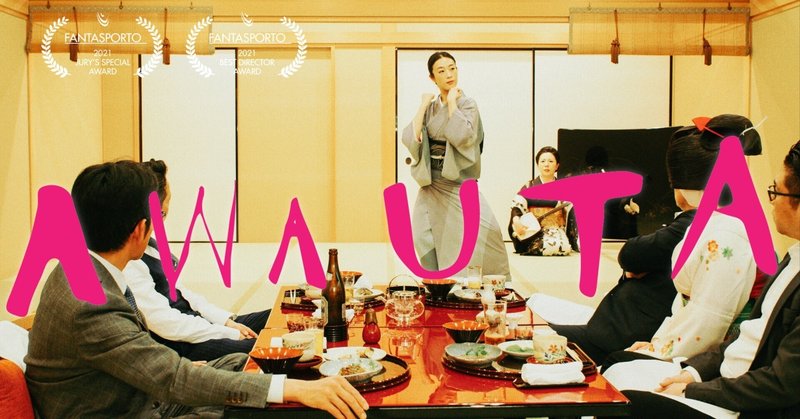
Awauta - Director’s Statement
The premise
Our world is undergoing enormous change. There are many people who find it hard to keep up, but the people I want to paint are those who are numb to the currents, poor, and carrying all kinds of insurmountable problems. My hero is a geisha. Nowadays geisha have become a kind of rare species deserving special protection, but originally they were free spirits, able to cross all kinds of boundaries. In ancient times they were both prostitutes and messengers of the gods, singing and dancing for the spirit world, and delivering messages from the heavens. In our contemporary world with all the restrictions placed on us, I wanted to paint a picture with that kind of wild-hearted geisha at its heart.
The Theme
In a word, you could say the theme is one of “eccentric revenge”. The ancient poem in the title sequence explains that beauty is to be found in the shadows. But I wanted to emphasize looking for beauty in reality itself, rather than looking for it in the vast ambiguity of shadow. And that, for Yumiko, discovering beauty is a kind of revenge against the gloom that has been thrust on her, and a way of discovering her true self. I believe that she is not just some fictional character I have forced into existence, but actually lives with us somewhere. A dangerous crystallization, like driftwood caught in the flow of a river, of the inner thoughts of so many women who must reluctantly live with constant oppression.
Having made documentary films until now, I had no desire to try to force my fictional story onto the world. I researched in detail the history and background of the town, the rivers, the roads that were to be the setting for the film, cast local people as actors, and obtained permission to film in the places that were especially relevant. I believe I have told a story that actually happened in that place, although perhaps nobody is aware of it. The old folk song that runs through the film as a vital key was once popular across Japan, but is long forgotten now. The Japanese title “”Awauta (Song of Awa)” refers both to an old song from the country of Awa - present day Tokushima - and also to a song that is as formless and unknowable as the foam (“awa”) itself.
The Method
The budget was 3 million yen. The film crew was three people. Apart from Yumiko, all the cast were amateurs and most of the scenes were improvised. Accidents and chance happenings were a blessing and the script was altered to accommodate them. I wanted to break down pre-established harmonies. Our challenge was to see how much we could accept beyond our preconceived ideas, how much we could ignore the script and create something on the spot as occasion presented itself. We filmed during one of the coldest winters on record, and the actors were flinching in the cold. I wanted to capture that cold, and the almost repulsive way it colored Tokushima’s worn-out streets.
I had no intention of explaining everything. In fact, I tried hard not to explain at all. Throughout the film, most of the cuts are of a hand, or a detail - I intentionally filmed from angles that could not capture the whole picture. Just as a different viewpoint makes a variety of different explanations possible, I wanted the viewers to be able to thread the scenes together into a story in their heads. After 18 months of painstaking editing, the film was completed.
Mile Nagaoka
『産土』の連続配信や記事のアップのための編集作業は、映像を無料でご覧いただくためにたくさんの時間や労力を費やしております。続けるために、ぜひサポートをお願い致します。
